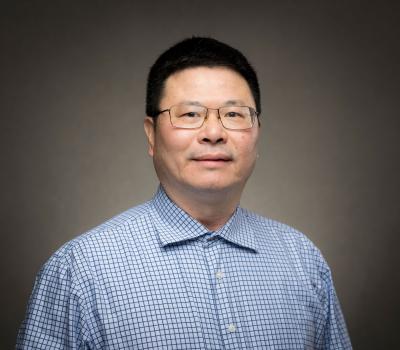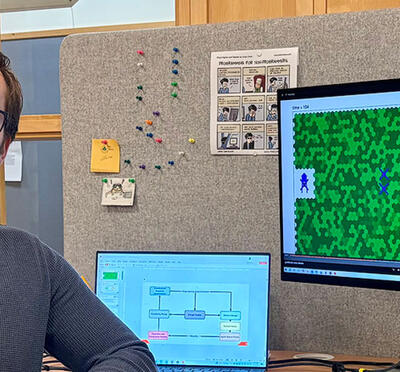Crabbing off the Oregon Coast is literally a case of “pot luck.” On a good day, you might pull up your crab pots to find them brimming with the daily catch limit.
Other times, your pots come up empty.
Kaichang Li, professor of chemical engineering at Oregon State University, recalls one fruitless crabbing excursion in particular, back in 1999. Denied their hoped-for feast of Dungeness after a disappointing day on the water, he and his companion opted to hunt for mussels instead.
It turned out to be a good day after all for Li, who at the time was a brand-new assistant professor in the Department of Wood Science and Engineering. Unfamiliar with mussels, Li was captivated by the bivalves’ ability to cling tenaciously to rocks below the surface.
“I was so excited that I almost forgot to eat,” Li said. “The mussels secrete a natural protein that functions as a very powerful waterproof glue. Right away, I saw the potential for a new type of adhesive.”
The idea stuck.
Extracting the mussel protein would be too costly to be practical, so Li set about looking for ways to make soybean proteins perform like mussel protein.
Soy flour was commonly used in plywood production before the advent of petrochemical adhesives in the 1930s, but it was abandoned because of poor water resistance. The fault, it turns out, lay in a carboxylic acid side chain of glutamic acid, the dominant amino acid in soy protein. Li discovered that combining soy flour with magnesium oxide effectively blocked this side chain and greatly reduced the soy protein’s water solubility.
The result was a strong, waterproof adhesive that could be made sustainably from plants. Li filed a patent for the new technology in 2002.
Plant-based adhesives have significant advantages over traditional plywood adhesives made from petroleum-derived products. In addition to being more sustainable to produce, they are also biodegradable, breaking down readily into Earth-friendly components at the end of their useful life.
They also are safer for the workers who handle the materials and for people who inhabit structures containing them. The urea-formaldehyde adhesive resins traditionally used in plywood manufacture emit formaldehyde, prompting concerns about long-term effects on environmental and human health. Formaldehyde is a volatile human carcinogen classified by the International Agency for Research on Cancer, the specialized cancer agency of the World Health Organization.
“Our adhesive is made entirely from food-grade ingredients,” Li said. “It’s basically soy flour and magnesium oxide, which you can find as a dietary supplement or in over-the-counter antacids.”
One of Li’s soy-based adhesives is manufactured under license by Solenis International LLC and marketed under the trade name Soyad. More than 150 million hardwood plywood panels have been produced globally with Soyad adhesives, making it the leading NAF (no added formaldehyde) adhesive for hardwood plywood in the world, according to the company. NAF plywood is a growing component of a global plywood market that was worth $41 billion in 2018 and is expected to reach $55 billion by 2024, according to market research by the IMARC Group.
Columbia Forest Products began using Li’s adhesive in its PureBond brand plywood panels in 2005. By 2006, the North Carolina-based manufacturer had converted all of its manufacturing to the more environmentally friendly, cost-competitive glue. In July, Columbia announced the deployment of the 100 millionth PureBond plywood panel using adhesive made from American-grown soybeans.
For his work in soy-based plywood adhesives, Li was awarded a 2007 Presidential Green Chemistry Challenge Award by the Environmental Protection Agency and a 2017 Golden Goose Award by the American Association for the Advancement of Science. The Golden Goose Award recognizes the benefits of publicly funded research by highlighting seemingly obscure studies that have led to major breakthroughs and resulted in significant economic and societal impact.
“People thought it sounded farfetched at first,” Li said. “How do you go from mussels to soybeans to plywood? There isn’t an obvious connection. So, I think the novelty of the research helped it win the award. But the important thing is that the impact of the work has been acknowledged.”
Li’s lab made headlines again in July 2019 with the development of the world’s first commercially viable pressure-sensitive adhesives made from vegetable oil. Pressure sensitive adhesives, or PSAs, are a multibillion-dollar sector in the global economy. They’re found literally everywhere in shipping and commerce — in shipping labels, packing tape, and postage stamps. They’re also in household items such as painter’s tape, sticky notes, and adhesive bandages.
The new adhesives, developed by Li with postdoctoral research associate Anlong Li, can be cured under ultraviolet light in one second, making the cost of producing tapes and labels competitive with existing production processes.
“Our PSAs use renewable materials, and manufacturing processes are simple and fast, as well as requiring much less energy than petrochemical-based PSAs,” Li said.
Li’s team developed the new PSAs to meet the exacting specifications of a Portland company whose clients include companies in the semiconductor industry. Oregon State has filed provisional patents on the adhesive formulations and curing process, and is currently working to identify licensees to develop and commercialize the technology.




